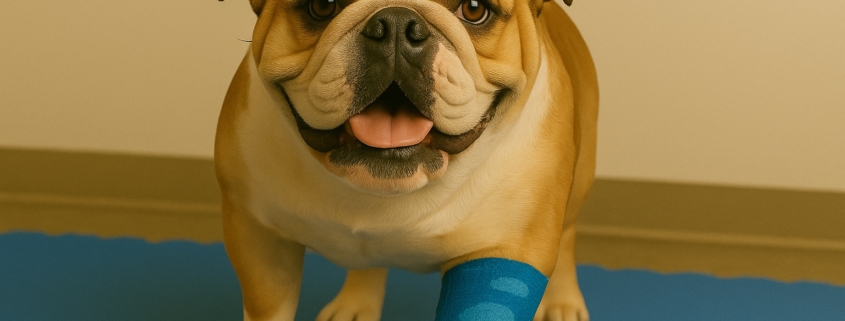Restricting exercise is often a first line of healing for dogs with soft tissue injuries, but is also prescribed for dogs recovering from surgeries (including spay, neuter, and ACL repair) and broken bones. Your vet may recommend keeping your dog kenneled when you aren’t home, short leashed walks lasting 5-30 minutes, no running in the yard and no jumping on furniture.
For my super active Aussie-mix, restricted exercise sounds like torture, but we’ve made it four weeks and only have two to go!
These are the five things I brought home from The Happy Beast that are helping her heal faster and bust through the boredom.
FYDO Bagel Bed
I’m a total sucker when it comes to dogs on the furniture. The FYDO Bagel Bed is so plush and snuggly that my dog thinks it’s an appropriate substitute for sleeping on my bed.
Tip: I turned all the furniture to face the wall so there’s no temptation for her to jump up. If you don’t want to lose access to your sofa and chairs, put heavy books on the cushions or block them with baby gates.
InClover’s Connectin
Connectin was developed as a joint support with glucosamine and chondroitin sulfate, so it’s amazing for dogs with joint pain and arthritis. My dog has a soft tissue injury, so I chose Connectin for its anti-inflammatory and circulatory-stimulating properties. InClover’s clinical studies were done on volunteered animals who already showed joint problems (which I find to be more ethical than studies done by other companies where healthy animals were inflicted with joint pain as part of the study- yikes!) InClover’s studies “show significant relief in weight bearing discomfort and increase in mobility”.
Tip: Connectin is available in three different forms. My dog is taking a crunchy tablet dipped in peanut butter every morning. I saw noticeable improvement after 14 days.
CBDRX Hemp Oil
CBD is quickly gaining popularity for treating pain and inflammation and decreasing anxiety in animals. (Read our blog on how it works.) CBDRX grows their own organic hemp plants in southern Colorado and extracts the CBDs in their facility in Boulder.
Tip: You want to use the lowest effective dose- which their representative described to me as one drop less than what makes my dog sleepy. I started with four drops, and worked up to half of a dropper. When I went over that dose, she slept really hard. (CBD doesn’t have any psychoactive properties, so you don’t have to worry about your animal getting “high.”)
Clicker and Training Treats
Since my dog is getting limited physical exercise, I’m increasing her mental exercise! Check out these stationary games we’re playing this month. My dog loves clicker training, so I chose a few tricks that can be done without her standing up and moving around. She almost has “lick your lips” figured out and it’s so funny!
West Paw Brain Toys
West Paw’s Zogoflex are stuffable and more challenging than a traditional Kong. Load them up with canned dog food, peanut butter or treats and freeze for a longer lasting “puzzle.”
Tip: It’s extra important to watch calories since your dog is getting limited exercise. On days when your dog is getting a lot of treats, feed less food at meal times. You can also use a Zogoflex toy in place of a dog bowl, and make mealtime into playtime!



 *Remember that while some cats absolutely love getting out and about, for other cats, especially those that are skittish, it might not be the best expression of their energy. For these kitties, a cat enclosure may be the safest way for them to interact with their natural environment.
*Remember that while some cats absolutely love getting out and about, for other cats, especially those that are skittish, it might not be the best expression of their energy. For these kitties, a cat enclosure may be the safest way for them to interact with their natural environment.